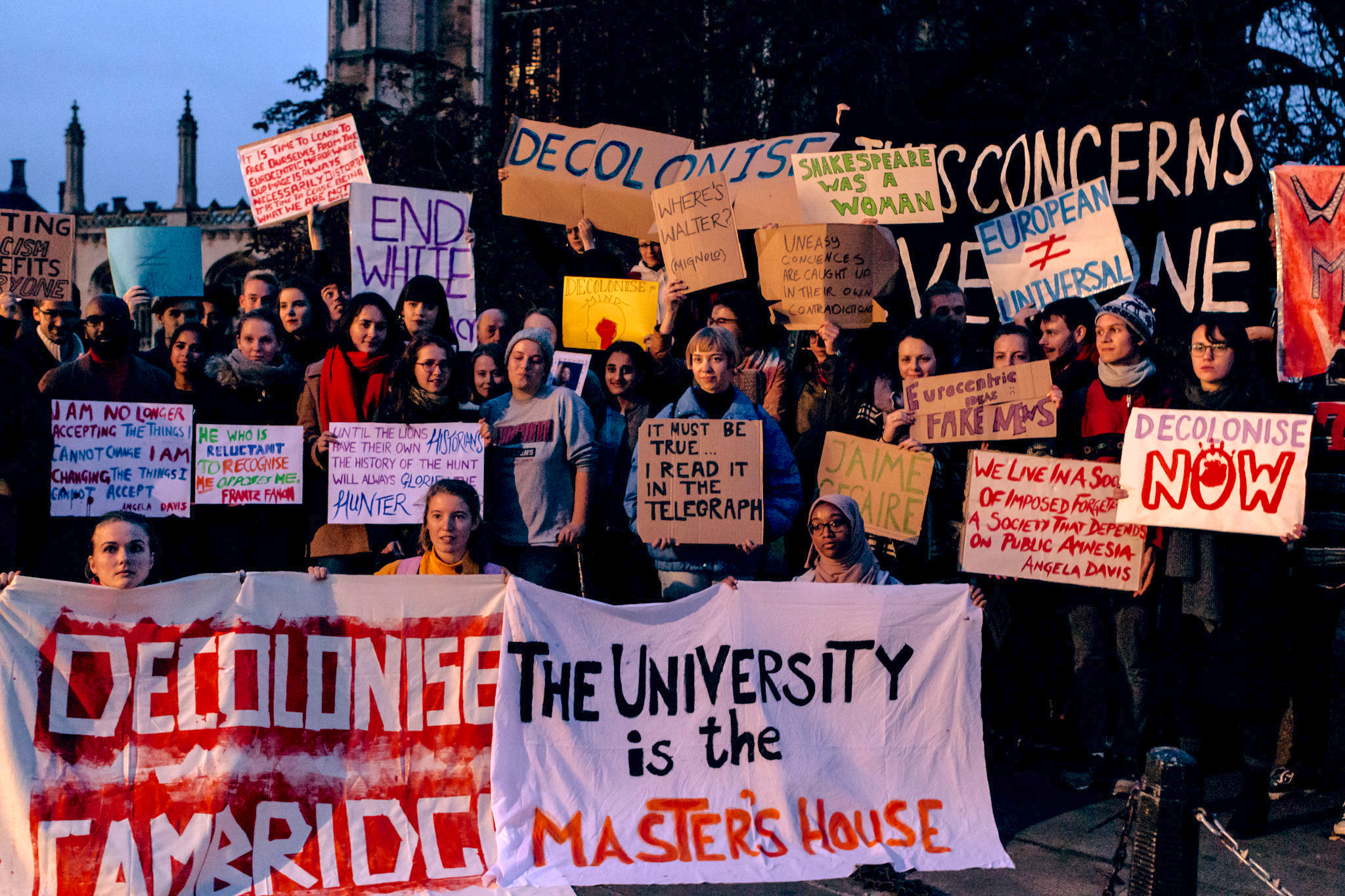
This is a question students in higher education have been asking all over the country. The movement started at UCL and has created a wave of uprising against the lack of diversity, eurocentricity and ‘whiteness’ of the curriculum. Universities in the UK operate under a curriculum of colonial legacy, the same legacy which endeavoured to create power structures and hierarchies on the basis of race. However, whiteness surpasses the exterior and aesthetic appearance of race. It exceeds beyond individuals; it is instead both an ubiquitous, inconsistent manifestation of power and the recognition of supremacy.
The concept of whiteness is associated therefore with the idea of a moral and intellectual supremacy that creates a racial hierarchy and subscribes socio-cultural capital.
Symptoms of a white curriculum can be seen far and wide, from the glorification of thinkers such as Galton to the distinct absence of academics who are not white from faculties, reading lists and ‘core’ subjects.
In addition to institutional racism and implicit bias, monoculturalism in hiring – in which individuals hire other individuals in their own image- reproduces an academy that is ‘normatively, habitually, and intellectually’ white’’.
Black and Minority Ethnic (BME) students are, unsurprisingly, the first to feel the effects of a white curriculum. Finding themselves under-represented and under-stimulated by the content of their curricula, their histories and ancestral narratives are omitted from mainstream discourse. The white curriculum is also one of the major contributors to the BME attainment gap, whereby students from BME backgrounds are 20% less likely to achieve a first or 2:1 degree classification compared to their white counterparts, despite arriving at university with the same grades.
The white curriculum enables processes such as misrecognition, whereby the ability and potential to succeed academically are only imagined in a ‘white’, eurocentric manner that conforms to a certain way of thinking and behaving.
In addition to under-representation in both academic and representational structures, institutional racism and microaggresions experienced by BME students, the white curriculum feeds into the feeling of marginalisation, alienation and exclusion.
This is a feeling shared by BME students and staff alike. BME staff are grossly misrepresented in the higher education sector; constituting only 1.54% of the total academic population. This in contrast to white academic professionals who represent 87.54%, which is in fact an over-representation representation in terms of being 86% of the broader population.
Furthermore, 92.39% of professors in UK academia are white (15,905), with 0.49% being Black (85) with just 17 of those being women. And of those Black academics only 0.58% occupy senior management roles (only 15), compared to 3.69%.
BME academics teaching what are often labelled as ‘optional’, and ‘alternative’ courses rather than part of the ‘core’ or ‘essential’ modules (unless you’re at SOAS) means BME academics are more likely to be casualised. As a result, they are more likely to be placed on part-time or temporary contracts. The lack of security in employment and progression further isolates the experience of Black academics and places greater pressure to perform and conform to certain requirements.
BME academics as a whole, leave their current institutions at a higher rate than their white counterparts, relating to experiences of exclusion, and isolation and over-scrutiny of their work compared to their white counterparts. Measures such as these only reproduce a vicious cycle of under-representation and marginalisation that begins at postgraduate study and persists throughout a career in academia.
Unfortunately, institutions often adopt a deficit model when tackling issues of under-representation and attainment. This problematises BME staff and students, and places the burden on them to improve ‘diversity’ and represent marginalised groups. The problem with these measures is that firstly, they isolate the experience of BME students and staff even more, and also establish ‘tokenism’.
This fails to address the institution itself and the ‘whiteness’ that continues to operate whether or not BME people are put on the cover of the university prospectus.
Instead, universities need to recognise the invaluable contributions of BME staff and students to their institutions as a whole, and grant them the lead and autonomy needed to truly progress with their core values of ‘equality and diversity’.
Students’ unions are not absolved from whiteness either, although perceived as more progressive spaces where many of these movements began. In some respects, students’ unions can demonstrate some of the most problematic behaviours of ‘tokenism’ and silencing of BME students.
This is why the self-organisation of students and staff alike, and campaigns like ‘Why is My Curriculum White?’ are so crucial. Only through grass-roots level organising will we be able to develop the necessary tools and language to dismantle ‘whiteness’ and institutional racism.
Movements like WIMCW are taking place all over the country, from student societies aimed at decolonising minds, to reading groups and new fields for postgraduate study. The people and resources absent from reading groups and core modules are being searched out and found. Awareness is growing, and it’s time for the academy to take a serious look at itself and answer for centuries of malpractice.









